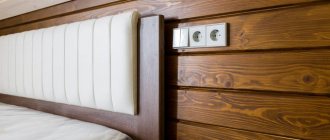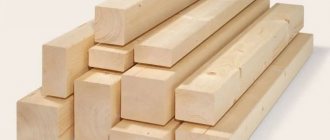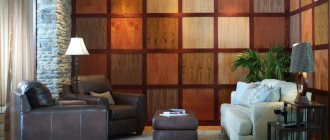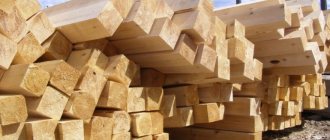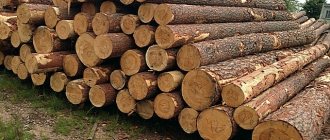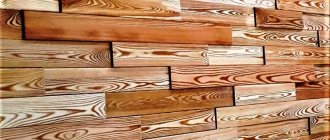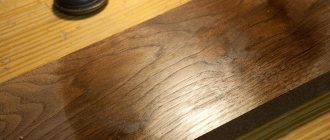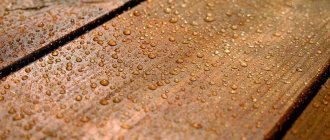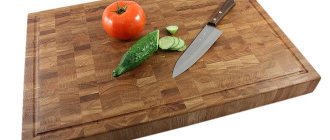Wood products look great, feel pleasant to the touch, and with proper care are durable. Pre-treatment and maintenance throughout the service life are very important. Without this, the wood will lose its appearance or rot. Varnishing and painting are far from the only options for protecting wood. In many cases, impregnation of wood against moisture and rot helps. It protects both structural details and decorative and functional elements. They just use different compounds with different properties.
Why do you need to protect wood?
Wood is a traditional building material. Construction traditions have remained, but the requirements for aesthetics, comfort and safety have changed. Previously, no one was particularly bothered by the fact that the log house, floor or fence became dark gray and cracked over time.
Wood treated against moisture and rot retains its properties for many years
Now we want our wood homes, floors or decking to look like they were well crafted and freshly installed for years and decades to come. And in addition to a long service life, it is desirable that it does not burn. Therefore, before making anything from wood, it is processed. And not just one means, but two or even three.
In recent decades, wood has been treated against moisture and decay using various impregnations. They can be water-soluble or oil-based. The compositions penetrate deep inside, making wood fibers impervious to moisture, killing fungi, insects and reducing the possibility of fire. This allows you to preserve the appearance of wooden products for a long time, avoiding drying out, swelling, damage by wood borers, the appearance of fungi and discoloration.
High-quality wood treatment against rotting is possible using good products
Primary treatment of wood against rotting occurs after drying. Sometimes raw wood can also be treated to prevent rotting. But the standard procedure is to dry, then process.
Briefly about the main thing
Fungus on boards not only spoils their appearance, but also has a destructive effect. Very quickly the wood affected by it becomes soft, loose, and loses its load-bearing capacity. It is better to prevent this by treating lumber with special compounds immediately after purchase or before assembling the structure. Their range allows you to select the right drug for any operating conditions, perform preventive treatment and destroy already overgrown colonies of parasites.
Ratings 0
How to treat wood for durability
Why does wood deteriorate? First of all, from high humidity, at which fungi develop in it, which leads to mold and rot. If you don't fight them, they will turn the tree into dust. How to treat boards against rotting and moisture? Antiseptics. Their cost is 25–30% of the cost of the material, but now we cannot do without this processing.
This is also wood, although it is already unattractive
Types of antiseptics and their use
What antiseptic to treat the boards depends on what you are going to do with them. If they need to be prepared for storage, then you can use a transport antiseptic . It is inexpensive, does not change the color of the wood, penetrates to a sufficient depth, killing spores and microorganisms. Can be stored in wood for up to 6 months.
Protecting wood from moisture and rot for a long period of time should be different. More expensive preservative impregnation . Such products form a film on the surface that prevents the penetration of moisture for a long time. Here it is important to choose the right antiseptic at the place where the material is used.
Before treating boards against rotting and moisture, you need to select compounds with the required qualities
For structural elements - beams, rafters, frames, the quality of processing and properties are important, and color changes do not matter. Antiseptic impregnations with a high degree of protection are used for these elements. They paint the material brown, greenish or reddish (fire-retardant compounds) colors. The same compositions are suitable for painting with dark or opaque paints. Changing the color also helps control the quality and density of application of the compositions - there should be no untreated areas.
- To protect wood without changing color, there are special compounds that preserve its natural color. There are so-called water-soluble antiseptic primers, and there are oil-based ones. Oil-based protection can be organic or inorganic and is selected depending on the next coat.
- If tinting is planned, then antiseptics are applied to give the selected shade. With one material you protect the wood and paint it in the desired color.
As already mentioned, antiseptics for treating wood are expensive, even those produced domestically. There are cheaper formulations that may be less effective and/or more difficult to apply.
Types of fungus and causes of its appearance
Before you start fighting fungus in a wooden house, you need to find out the reasons for its appearance, determine the boundaries of its spread, and then move on to choosing a composition for treatment. The most common types of this pest found in buildings made of logs or timber are:
- White house fungus. It develops most quickly, covering a large area with mycelium, constantly increasing it. The best conditions for emergence are formed, as a rule, underground. Also often fungus is found under the floor or in the basement;
- Rotting fungi. There are several types that differ in color and appearance - white brown and bacterial. They most often appear near places with high humidity, for example, near water pipes, although dry rot also occurs;
- Blue fungi. A very dangerous pest that can penetrate wood, destroying the varnish or paint coating. Despite the fact that they do not cause serious consequences for the strength and integrity of the tree, they often act as a harbinger of the appearance of more dangerous types of fungus. In addition, they give the surface of logs and beams an extremely unpleasant bluish tint;
- Actinomycetes. They are a cross between algae and fungi. They have an extremely destructive effect on wood, quickly reducing its strength;
- Mold fungus. A universal pest that can exist not only on wood, but also on concrete, fabrics, stone and even ceramic tiles. They have spores that are extremely harmful to humans; in addition, they give contaminated surfaces of building structures an extremely unpleasant appearance.
Most often, fungus appears in the subfloor of a wooden house and its other structures for one reason - due to increased humidity levels. Therefore, it is quite logical to begin the fight against this extremely harmful phenomenon by creating an effective ventilation system that can ensure rapid and effective removal of moisture from the premises of the building.
Identifying different types of fungus is quite simple. Among its typical manifestations are the following: a sharp and damp smell, stains and darkening on wooden surfaces located in different places, wet areas in the corners of the building, on the floor or walls, etc. It should be noted that removing the fungus is not as easy as it might seem at first glance. Therefore, you should study the sequence of work very carefully. Naturally, you should not forget about choosing an effective remedy for fungus.
Folk remedies for impregnating wood
Not everyone has the desire or ability to buy expensive wood processing products. Purchased options are good because they have pre-known properties and certain quality and do not require lengthy preparation. Open it, stir it and start working. Traditional methods used to protect wood are much cheaper, but their preparation is a whole process. And the properties and the result depend on the observance of proportions and/or sequence of actions.
Not the only layer is involved in protecting wood from rotting and moisture.
Copper sulfate as an antiseptic for wood
Copper sulfate is transparent blue granules. Sold in small packages of 20–500 grams, there are kilogram packages, sometimes in bags of 20–50 kg. It's inexpensive. Using products based on it, you can treat wood against mold, fungi and other biological damage.
Copper sulfate as a means to protect wooden structures
Copper sulfate actively corrodes metals, so do not use metal containers or tools for work. Only plastic or glass.
How to make impregnation for protection from copper sulfate
An aqueous solution of copper sulfate is a good antiseptic for wood. Does not change color after treatment, but fades or is washed out over time. So such a budget replacement is suitable instead of a transport antiseptic. It is suitable for processing dry or seasoned wood.
- Aqueous solution for wood. Per liter of soft warm water 5–10 grams of copper sulfate. Stir until completely dissolved. When applied with a brush, apply at least twice when the first layer is completely dry. Approximate consumption for double application is 0.9-1 l/m². This method is good before storage or before finishing. It is important to dry the material after coating.
Temporary protection can be done using a solution of copper sulfate - For wooden elements that will be in direct contact with the ground, soaking in a solution of copper sulfate is required. The solution is made more concentrated - 20% or higher. That is, dissolve 200 grams of copper sulfate in 1 liter. Immerse the wooden elements in the resulting solution for 2 days. Having taken it out, we dry it for a month under a canopy in a ventilated stack. Posts treated in this way can be buried in the ground without any fear, and flooring or decking boards will last at least 20 years.
This is an inexpensive way to protect wood from rot and fungi. Using copper sulfate you can achieve non-flammability. To do this, add copper sulfate to the lime solution. A board whitened in this way becomes non-flammable.
Iron sulfate for wood protection
Another inexpensive antiseptic that can replace factory-made antiseptic is iron sulfate. It is used in gardening, so it can be found in stores of this specialization. The properties are approximately the same, but the compositions for processing are more complex, both in terms of the number of ingredients and the preparation technology. These compositions were invented by the Swedes and Finns, whose traditions of building with wood are no less ancient than ours.
Iron sulfate (iron sulfate) is green granules. Used in gardening
Finnish recipe for protective paint
Finnish recipe for protective impregnation of wood. It will even preserve the fence for decades. The accuracy of dosage and preparation sequence is important here. We take the following ingredients:
- 9 liters of water;
- 1560 each of iron sulfate and dry lime, ground into powder or dry lime pigment;
- 720 g rye flour;
- 360 g kitchen salt.
You can cook paint with antiseptic properties yourself and cheaply.
If you want a guaranteed result, do everything exactly, don’t change anything. There are already many options for replacing ingredients, but how long the modified recipe will last is unknown.
How to cook
The cooking sequence is as follows. Gradually add 6 liters of water to the flour, stir until smooth. You should get liquid sour cream. It will be easier and faster if you use a construction mixer. You will stir for a long time without heating with a wooden stick. As a compromise solution, stir with a stick until the lumps are completely dissolved, then warm up a little.
If you add red pigment, you get something like this color
Boil the rest of the water (3 liters) and gradually pour in, without ceasing to stir. The result is a paste of medium thickness. We put it on the fire, stirring, pour in salt, iron sulfate and lime powder or dry lime pigment. The result is not only impregnation, but also paint, the color is brownish-brown. That is, we not only protect the wood with one composition, but also paint it.
How to get a different color and how to apply
If you need a color other than brown, we get it by using lime pigment. But remember that the original color is brownish-brown. You won't get blue or light gray based on it. Red brick, ocher and other similar ones are easily obtained. You can select a specific color using trial batches.
The paint is applied to the wood with a brush in two layers. Apply the second layer after the first has completely dried. Over time, the color changes slightly and becomes lighter.
Swedish recipe for wood protection paint
It differs in composition, but the preparation technology is similar. The base color is brown. The ingredients needed are:
- 9 liters of water;
- 520 grams each of iron sulfate, salt and lime pigment;
- 480 grams of natural drying oil;
The preparation procedure is similar; drying oil is added at the end of the process. There are options in which 260 grams of iron sulfate and the same amount of red lead are taken. The color of the composition shifts towards yellow. That is, it is easier to obtain green shades based on it.
Application rules
Both wood protection impregnations - Finnish and Swedish - are applied to boards or logs that have not been painted before. Resinous varieties are best deresined. To do this, they are treated with a solution of soda ash (50–100 grams of soda ash per liter of water). Apply a warm solution (temperature at least 40 °C) twice, then rinse with warm water. Dried wood can be painted.
Iron sulfate is included in homemade paint for wood processing
It is better to apply Finnish and Swedish wood protection compounds on a cloudy day. Or choose a time so that the sun does not shine on the treated surface. After drying, the paint, even with mechanical impact, does not wear off. During precipitation, colored water may flow, but this does not particularly affect the appearance. Such treatment will preserve wooden products that are outdoors for 20 years or more.
Finnish and Swedish impregnation paint is applied in two layers. Before applying the second one, wait until the first one is completely dry. This may take more than one day. The thick binder is absorbed slowly. The drier the wood before painting, the faster it will dry.
Traditional methods of getting rid of fungus
When using what are commonly called folk remedies, you need to remember three points:
- their use is often remembered when it is too late and more effective solutions are needed;
- It is difficult to remove overgrown lesions with household solutions, and when they are destroyed there is always a risk of new colonies appearing;
- When getting rid of mold, you need to simultaneously eliminate the causes that gave rise to it.
Let's look at the available products that you can find at home or buy.
Treatment with chlorine bleaches
Stores sell a solution that is traditionally called “Whiteness”. The compositions of different manufacturers may differ, but the main substance does not change - it is sodium hypochloride, a powerful antiseptic and oxidizing agent.
At chemical plants, it is used to disinfect water and various surfaces; in everyday life, it is used to bleach fabrics and disinfect bathrooms.
Do not forget that any products containing chlorine are potentially hazardous to human health. If they enter the respiratory tract, they can cause vomiting, dizziness, and, with increased doses, poisoning, so it is necessary to use protective equipment: mask, gloves, respirator
When using the solution, it is important to determine that it is diluted with water in a ratio of 1:10, but to combat mold, a more powerful antiseptic is needed, so the proportions change to 1:1.
Whiteness is ideal for smooth surfaces such as tiles or hard plastic. Wood has a porous texture, which is very difficult to process, so a chlorine solution is only suitable for removing external signs, stains and stains; it will not save you from deep penetration of fungus.
The concentrated composition is applied in several layers with a paint brush, then washed off with clean water. If the fire is in an inaccessible place (in the attic), the product does not need to be washed off.
Pharmacy antiseptic solutions
Hydrogen peroxide, which is used to treat wounds and scratches, also works great against fungus. As a rule, a small bottle of peroxide can always be found in the first aid kit, so nothing prevents you from doing a little experiment.
Moisten a cotton pad with a few drops of the solution and wipe the mold-affected wooden surface. If the stains disappear, you can process the already clean area several more times.
Like chlorine-containing substances, you don’t need to expect miracles from peroxide. You can use it to clean tiles, porcelain tiles, enameled or concrete surfaces, but wood is a soft material and cannot be quickly “treated”
If you purchased a bottle of 3% solution, do not dilute it with water, this concentration is not considered strong. It is enough to apply peroxide to the damaged area and leave for a while, then repeat the procedure.
The second solution “from the pharmacy” is ammonia, which is included in products for cleaning windows and washing the print heads of inkjet printers. It also works effectively on smooth surfaces (glass, earthenware, plastic), and with moderate success on wood (or plasterboard).
The procedure should be carried out according to the same rules as with “Belizna”: dilute in a 1:1 ratio, do not forget to wear gloves and a respirator.
The use of "kitchen" products
At least two products used to combat mold can be found in your kitchen cabinet. This is vinegar and soda.
Vinegar, like Belizna, is not able to completely remove mold, but, unlike it, it is absolutely safe for humans. It is not diluted with water, but is applied in large quantities to the infected areas using a roller, brush or sponge.
To increase efficiency, do not use weak table solutions, but vinegar essence or acid, which is more concentrated
If the mold on a wooden surface resembles plaque, then there is a chance of getting rid of it completely. However, do not forget about the persistence of harmful microorganisms and wipe the areas at risk every 2 weeks - until you correct the ventilation and insulate the room.
Soda is also one of the safest remedies. It is often used for cleaning children's clothes and washing dishes. However, when paired with vinegar, it can destroy a small colony of mold. If you notice a scattering of small black dots on the walls, dilute baking soda in vinegar and wipe the infected area.
The vinegar-soda solution can be placed in a spray bottle and sprayed on the walls (floor, ceiling, attic floors, exterior of the house) every 2-3 hours.
Soda does not harm wood, so this option is also possible: pour a small amount of powder onto a slightly dampened cloth and rub into the damaged area, and then rinse with water.
Professional products
First, let’s talk about how, when, in what way and what is the best way to apply wood impregnation against moisture and rot. For treating boards with an antiseptic to make sense, the composition must be absorbed at least 5–7 mm inside. It is better if the composition penetrates 1 cm. This is only possible if the wood is dry.
Treating wet boards with an antiseptic does not make sense, since the product will only remain on the surface and will wash out/dissipate very quickly.
If the treatment of the boards with an antiseptic was of poor quality, it simply will not work.
Ideally, the product is applied immediately after chamber drying in a pressure bath. But this is only possible in an enterprise. This material costs 4 times more than freshly sawn material. To obtain a good effect, a number of conditions must be met:
- Treat dry wood. Dry is with humidity less than 20%. In order not to order more expensive dry lumber, freshly sawn timber is laid out in ventilated stacks and left for at least a month under a canopy. The canopy can be temporary - place slate or other similar material on the stack.
- For a good result, dry wood is dipped in a bath of solution for at least 10 minutes. Then they take it out and dry it in a ventilated stack for another couple of weeks. After this, the lumber can be put to work.
Without protection from external influences, wood is destroyed
- The result will be worse if the product is applied with a brush. If you apply 2-3 layers, it will be slightly better, but still, dipping gives the best effect.
- Do not use a spray bottle to apply antiseptic. For protection, the product must be absorbed into the wood fibers. In this case, we are not talking about impregnation, this is only surface spraying.
The rules are not too complicated, but compliance with them is a necessary condition for high-quality protection of wood from fungus and mold.
How to do it right
A few words about the stack and the bath. An aerated stack is when the lumber is stacked with a gap and is surrounded on all sides by air. Wood - board or timber - is laid out on dry slats/bars in a spaced manner. The bars are laid out in increments of 1-1.5 meters across the lumber. We lay the lumber on them not one to the other, but with a distance of at least 2–3 cm. We laid out a row, again the bars across and the next row. The stack ends again with slats on which the roof is laid. This is what we do if we store it not in a barn or under a shed.
Soak in the bathroom, dry in a ventilated stack
It’s also easy to make a bath for impregnating boards or timber. Knock out a rectangle from the timber. The length should be longer than the length of your lumber. Width - several boards or timber laid one next to the other. Cover the inside with thick film and secure along the edges with staples from a construction stapler , forming a bathtub. Pour the product and immerse the lumber. Depth - so that you can drown the board or timber.
If there is not enough product (dry wood absorbs it well), then you can turn the bars over, soaking each side for 10 minutes. You can avoid wasting money by keeping the soaked lumber over the bathtub for some time. We place the bars across the bathtub, put the material already soaked in antiseptic on them and let the excess drain back .
How to treat boards against mold
Blue and black mold are most often found on wood. There is also rotting mold, the color is gray, often present on lower grades of wood, classified as a defect. Later, this “defect” can spread across the entire board. White mold is more common in wood that is in direct contact with the ground.
Bleach and antiseptic can correct the situation
To avoid the appearance of mold on boards and beams, it is necessary to dry the material and coat it with any of the antiseptics, choosing according to the area of application (inside the house or outside) and depending on the next layer.
How does mold form?
Mold is a type of fungal infection of wood. Mushrooms form on the surface when there is high humidity and/or insufficient ventilation of the room. Having arisen in a small area, mold quickly spreads, conquering a large area. When wooden structures or parts come into contact, the fungus quickly spreads to healthy wood.
Warm and damp weather is the optimal environment for mold to form. It is noteworthy that even painted or varnished wood can be affected by it. True, in this case, the destruction of the tree will be minimal if the fungal spores are removed in time.
Mold damage occurs at all stages of tree growth and use. If conditions are favorable, mushrooms
form on or under the bark. Usually the lesion begins on the north side, where sun exposure is minimal. In dense forests, where the sun does not illuminate tree trunks sufficiently, lesions can occupy a significant part of the trunk. That is why, immediately after cutting down a tree, it is recommended to clear it of bark.
Fungal colonies can also form on the trunks of freshly cut trees. Even in the absence of mold on the trunk, after sawing it into varietal materials, the fungus can infect them if the drying conditions were unsatisfactory.
In construction, the causes of mold may be improper vapor barrier, lack or violation of waterproofing, lack of ventilation gaps when materials with different densities come into contact.
At home, mold readily attacks any wooden products stored in a warm, humid environment. Very often, especially in village houses without ventilation, you can see moldy wooden dishes or cabinet shelves covered with fungus. This occurs due to insufficient ventilation of the internal volume in which the products are stored.
Even treated wood can develop mold.
How to treat wood in the house
To work in the house, you need wood impregnations that have a slight odor. For the most part, these are aqueous compositions that are applied as a primer under the finishing layer. There is another way - to use formulations based on natural oils. They are not for painting, but are a finishing touch themselves due to the content of antibacterial components.
Is it always necessary to treat wood before painting or varnishing? No. If you live in a permanent home with normal ventilation, you may not need to impregnate it with an antiseptic.
- Antiseptics for wood for interior work. This group includes water-based compounds. They are absorbed into the fibers and do not have a strong odor. Can be washed out, so do not use in wet areas. Only for dry ones. These are the following products: Pinotex Interior, Tikkurila Supi, Ecodom bio; GOODHIM V250; BELINKA IMPREGNANT; SENEZH ECO-BIO; VALTTI EXPERT BASE.
A suitable antiseptic composition will help protect the wood in the house from fungi and mold. - Antiseptics for wood for outdoor use. Compositions for external use are based on: Oils - organic or inorganic. On an organic basis, it can be used in rooms with high humidity (including baths). Examples PINOTEX WOOD&TERRACE OIL, BIOFA protective oil. Inorganic - only for timber and boards outside non-residential premises (sheds, garages, etc.). Popular compositions in this group: façade oil GOODHIM, VALTTI TERRACE OIL. The latter composition is also suitable for protecting wooden terraces.
- Solvent-based wood preservatives (usually white spirit based). Their advantage is that they are natural, and at the same time they are little washed out. Can be used both indoors and outdoors. They also improve adhesion. This will mean the finish will adhere better. Examples: Senezh Universal, Texturol bioprotection, VERES GOLD and PLATINUM LAZURA.
Some antibacterial impregnations are made based on natural oils and have dual purposes. They contain antibacterial components and toning agents. After application, they do not leave a film on the surface, being absorbed inside. The texture of the wood remains, only the color changes. And it's not always brown or yellow. There are even blue, green or other equally exotic wood colors.
Practical Notes
Water-based antibacterial wood impregnations do not form a film on the surface. In case of emergency, they can be used to treat damp wood. It will be ineffective, since deep penetration cannot be achieved and conditions for the development of mold and fungi will remain.
Wood oils with antibacterial additives do not cover the texture, but tint
These are not paints, but compositions that change the color of wood. That is, with one treatment we achieve a double effect - we protect and apply a finishing layer.
How to treat boards against fungus and rot
What to do if there are already lesions? If fungus and mold have already changed the color of the boards or lining and they have darkened? There is “heavy artillery” in the form of so-called medicinal antiseptics for wood. They destroy fungi, mold, bugs and traces of their vital activity, and lighten it. This is not only bleaching, but also preservation, that is, preventing re-infection.
An example of the action of a therapeutic antiseptic: the whitening effect is sometimes immediately visible. Sometimes you need to wait. If the lesion is deep, a two-layer application may be required.
In addition, the biocomponents remain inside, protecting the material from re-infection. Examples of medicinal antiseptics for wood:
- SENEZH BIO;
- GOODHIM N300;
- PAF-LST;
- HOMEENPOISTO.
With wood bleach
There is another way to remove blackness and darkening from boards. Apply wood bleach first, and when it lightens the affected areas, fix the effect with an antiseptic that is suitable for the conditions. This step-by-step treatment of boards from rotting and moisture is more costly and time-consuming. You can treat the boards against fungus as many times as necessary until the blackness or blueness disappears completely.
Special bleaching compounds will help eliminate darkening or bluing of wood.
Wood bleach can be based on chlorine, oxygen, or oxalic acid. Chlorine preparations have a characteristic odor and a well-known poisonous effect. Therefore, for the most part, they are used for outdoor work. Oxygen compositions are odorless, also destroy blackening well, can be used for residential premises, but also work well outside. Oxalic acid-based wood bleach is suitable for thin types of wood, but does not penetrate well into others.
Examples of wood bleaches based on organic solvents: SAGUS Standard for previously unpainted wood; Bioshield 1 and 2 are effective against bugs and mold; PROSEPT 50 and SAGUST standard - based on chlorine; NEOMID 500 - for deep lesions.
Features of selection
If you decide to apply two compounds - bleach, then an antiseptic, make sure that they are compatible . It is also worth selecting the finishing coating so that it can be applied to the type of antiseptics with which you coated the boards, lining, etc. To avoid problems, it is easier to take compounds from one company. Many manufacturers have standard kits to solve the most common problems.
A comprehensive solution is not always cheaper, but usually more reliable
Before purchasing, carefully study the manufacturer's recommendations. Some compounds are only suitable for previously unpainted wood, others will only be effective for dry boards. There may be special requirements for operating conditions, temperature conditions or ultraviolet intensity.
How to treat wood in a bathhouse
The bathhouse differs from all other buildings in its difficult operating conditions: high humidity, plus temperature changes, because these rooms are often unheated. Antiseptics that would cope with such conditions, based on inorganic substances, cannot be treated with boards in a bathhouse. They are not suitable for indoor use. When heated, all the chemicals will be in the air, and instead of healing from bath procedures, there is a chance of getting poisoned.
You can treat the boards in a bath with oil with antibacterial additives for severe operating conditions. Usually the description says that they can be used in baths. Examples of such compositions:
- Veres Classic Lazura.
- NEOMID 430 ECO. Difficult to wash off composition. You can treat floorboards in a bathhouse.
- GOODHIM DW 400S is a therapeutic antiseptic for baths.
You can’t cover the boards in a bathhouse with just anything - GOODHIM S200 is a water antiseptic for treating boards in a bath. Does not react to high temperatures, does not wash out.
- KRASULA® FOR BATH AND SAUNA. Protects against dirt, moisture, grease and soap stains. You can process the boards in a washing room or steam room.
- Tikkurilla Sauna. This composition can be called a classic for covering boards in a bathhouse. Gives a lasting result when applied to dry, seasoned wood.
- Senezh KhMF and KhMF-BF. A hard-to-wash antiseptic that resists fungi and mold well.
- Kartotsid-Compound. Therapeutic, hard-to-remove wood impregnation.
If there is a need to save money or there is no desire to use substances of non-natural origin, then you can cover the boards in the bathhouse with natural oil. Hemp, flax, and even pumpkin seeds, except sunflower, leave behind a sticky film to which dirt sticks.
How to treat boards from rotting on the street
In order for a fence, gazebo, decking, or wooden plank on a terrace to look attractive for a long time, they must be treated before painting. And here the question is, what is better? Non-washable or poorly washable antiseptics, no matter on what basis.
There are special antibacterial impregnations that also protect against ultraviolet radiation, withstand both overheating and frost, and adhere tightly to wood fibers so that rain and snow do not wash them out.
Be sure to treat the wooden fence, flooring boards, gazebo from rot and mold
The composition should also be difficult to wash out. Wood that is located outdoors comes into contact with water, so protective substances must be fixed inside and not washed out by precipitation.
Impregnations for wood outdoors
The easiest way to choose an impregnation for a board is to look at the manufacturer you trust. If this is not the case, carefully read the descriptions of those that you come across in your stores. You can buy it on the market, but it is not advisable - long-term storage may violate the conditions. Not all of them can withstand freezing without consequences.
The following compounds have good characteristics:
- Senezh XM-11. The foreign analogue is Selkur (made in England and the USA). Suitable for protecting wood that has direct contact with the ground; it is difficult to wash out. If wood is properly impregnated, it will last 40–50 years. Suitable for both fence and terrace flooring. It is not suitable for indoor use, as it will not protect against household fungi.
- Rogneda Biosept and Biosept-Ultra. The first option does not change the original color of the wood, the second gives a greenish tint. Both are difficult to remove and are suitable for long-term weather and UV protection. Dry material must be kept in a bath with the composition for at least 15–20 minutes, then contact with water must not be allowed for several days.
With Biosept and Biosept Ultra protection, a gazebo, terrace or fence will last 20 years or more - Neomid Extra Eco. A safe product that can be used to cover a fence, terrace or subfloor. Suitable for walls, but not for those parts that are in contact with the ground.
Treatment of timber against rotting and moisture will be of high quality only if the lumber is immersed in a bath with a solution. Although the description says that it can be applied with a brush, roller or spray bottle, the guaranteed effect will only be achieved when immersed.
How to treat wood from rotting in the ground
How to prevent wooden poles from rotting? The cheapest and most reliable way is to burn the ends of the pillars that will be dug into the ground until coal appears. Coal will perfectly protect against bacteria and fungi. You can reduce moisture absorption by turning the pole upside down.
You can treat wooden posts against rotting with waste oil, if the environment is not important, and with wood products in places that come into contact with the ground
If you need to treat boards, round timber, planks, lining and other lumber that will be in contact with the ground for a long time against rotting, choose from a group of hard-to-wash antiseptics. This will guarantee long-term protection against fungi and insects.
- Senezh KhMF, the KhMF-BF version, is used for impregnation of supports; KhMFS also does not corrode iron. That is, it is good for impregnating strapping beams.
- Senezh HF solution. Suitable for processing lower crowns and supporting structures both outside and inside the building.
- Neomid 430 Eco. This composition is suitable even for berths. Environmentally friendly, can be used for processing boards for beds.
- Pinotex Impra. Good for processing poles and beds, but does not tolerate open weather exposure.
Application rules will be in the instructions.
Causes of mold formation on wood
Before looking at how to remove mold from wood, it is important to find out why it appears. The first sign that there is fungus in the house is a change in color. A characteristic brown, blue, black, pink or white color appears on the surface of the wood. At first the spots are barely visible. And in the absence of timely treatment, they increase in size and affect large areas of the material.
Some bacteria do not destroy the texture and do not penetrate deep into the wood. But they can ruin the aesthetic appearance of wood trim, floorboards or wall cladding. There are several reasons why fungus appears on wood:
- improperly organized ventilation in the room;
- high humidity;
- sudden temperature changes;
- condensate;
- low-quality wooden material;
- infection of wood by fungi;
- contact with damp soil for a long time.
Mold fungus is dangerous not only because it multiplies quickly, but also because it has a negative impact on people and pets. If you use material contaminated with mold to build or decorate a house, the consequences can be very serious, including the complete dismantling of wooden structures.
